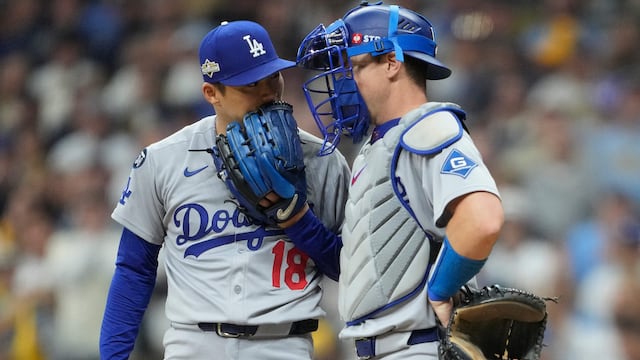Baseball has a long history of sign stealing, but a couple of years ago, Major League Baseball introduced a new electronic device to enhance the experience between catchers and pitchers.

How do catchers relay signals to pitchers? The technology behind PitchCom communication
Catchers have relayed signs to pitchers in the MLB for over a century through a sequence of finger movements.
But after the Houston Astros’ sign-stealing scandal in 2017 and five years of sign-stealing along with the spying techniques used to decode them being in the spotlight, in 2022, the league found a way to end it.
It’s called PitchCom.
An in-depth look at how Pitchcom works pic.twitter.com/rDwFhaRBAx
— Jomboy Media (@JomboyMedia) April 9, 2022
How does PitchCom work?
Invented by John Hankins and Craig Filcetti, PitchCom is an electronic device that transmits pitch signals from the catcher to the pitcher. It was approved for use in the league by the MLB Players Association in 2022 and implemented for the 2023 season. Many teams have embraced the new technology.
One of the first franchises to take it up was the Diamondbacks. Manager Torey Lovullo explained its benefits: “We really believe in it, we run a lot through the PitchCom. It’s not just fastball down and away. We run our pick series, first and third plays off of it.”
PitchCom provides a remote control that hugs backstops’ wrists and a speaker in pitchers’ hats that vocalizes the signals to further protect against sign-stealing. The official website describes the device as a “player-wearable transmitter that allows players on the field to communicate plays to each other without using physical signs or verbal communication.”
This is what PitchCom looks like: catcher wears transmitter on his wrist, pitcher wears receiver in his cap. https://t.co/R2BqGSkVbG pic.twitter.com/WKqpEqVzhi
— Bill Shaikin (@BillShaikin) April 5, 2022
Catchers can now press a button on the device that relays an audio signal straight to a receiver tucked inside the pitcher’s cap. Conversely, the pitchers hear something like “high fastball” or “low curveball.”
Under the new rule, each of the 30 clubs will be able to possess three PitchCom transmitters (used for calling pitches) and 12 receivers (ear pieces used for hearing the pitch call). At any one time, two transmitters are permitted to be in use on the field - one for the pitcher and one for the catcher. And up to five receivers in total can be worn by the defensive team.
Other benefits of PitchCom
This new technology also allows players to communicate effectively without the other team having a chance to steal signs like before. It can also be programmed in different languages, a massive plus for many foreign players with communication issues. Additionally, the PitchCom device allows other players, like the shortstop, to listen in on the selected pitch.
Where there is satisfaction, there is criticism
While another benefit of the device is that it is believed to speed up the game, this is also one of its cons. Some players, like Atlanta Braves Travis D’Arnaud, are not fans of the new device because it “rushes the game” as the rapid audio relay from the catcher to the pitcher eliminates any confusion with hand signals.
Related stories
But while the device might not be everyone’s favorite new thing, it is bringing professional baseball one step closer to combating a problem long overdue.
In the two years since in was approved for use, PitchCom technology has been adopted by other major leagues around the world including Mexico, Dominican Republic, Korea and Taiwan.

